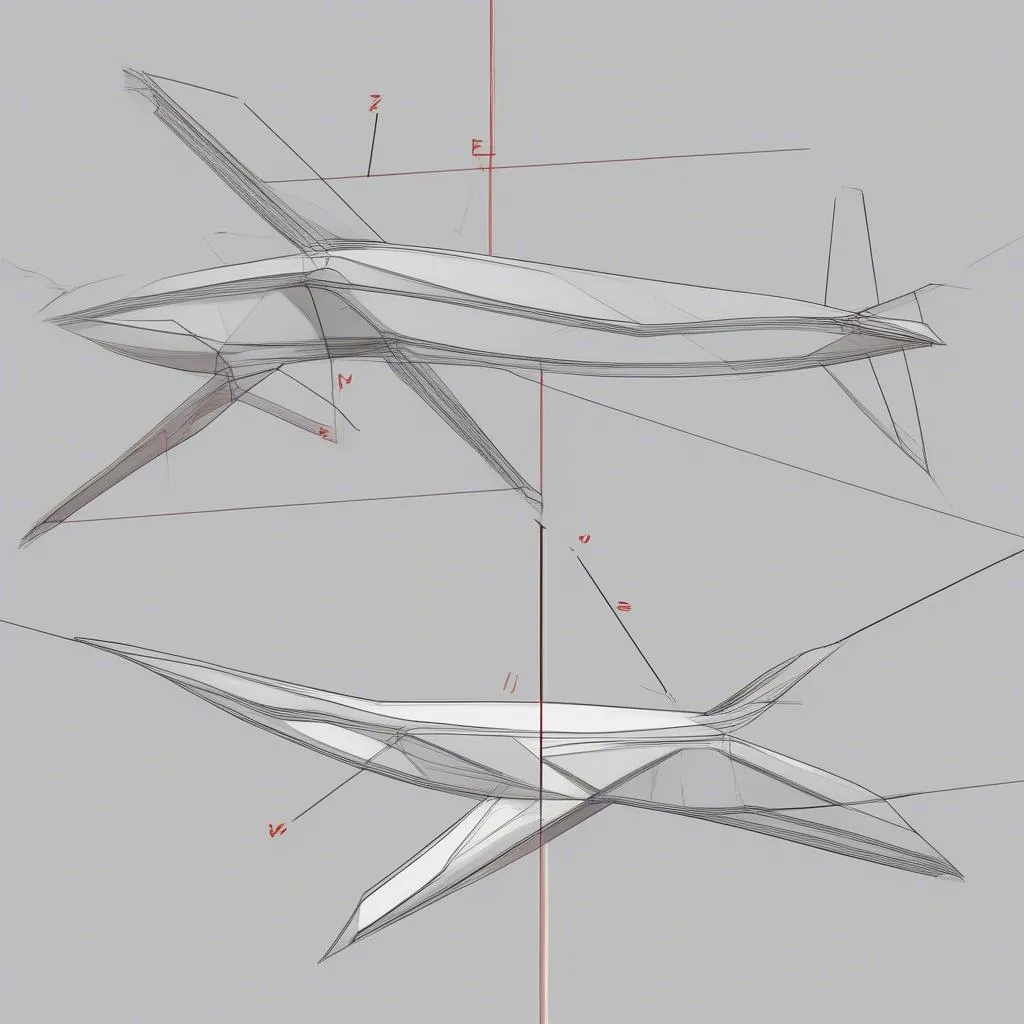“To go far, you need companions; to study well, you need methods,” as the proverb wisely says. In the realm of 3D geometry, mastering how to determine angles is the key that unlocks the door to success.
Introduction to Angles in 3D Geometry
3D geometry is a vibrant world where shapes, lines, and planes intertwine to form unique structures. Within this world, angles play a crucial role, serving as bridges that help us understand the relationships between geometric elements.
What are angles in 3D geometry? They are defined as the portion of a plane bounded by two rays originating from a common point, measured by the angle between these two rays. In essence, an angle is a measure of inclination or deviation between two lines or two planes.
Types of Angles in 3D Geometry
There are various types of angles in 3D geometry, each with its own characteristics and methods of determination. Here are some common types:
1. Angle between two lines:
 Angle between two lines
Angle between two lines
This is the most fundamental type of angle in 3D geometry. The angle between two lines is defined as the acute angle formed by two rays originating from a common point, with each ray lying on one of the two lines.
Example: The angle between two edges of a cube, the angle between a diagonal of a rectangular prism and one of its edges, etc.
2. Angle between a line and a plane:
 Angle between a line and a plane
Angle between a line and a plane
The angle between a line and a plane is defined as the acute angle formed by the line and its orthogonal projection onto the plane.
Example: The angle between an edge of a pyramid and the base plane, the angle between an altitude of a pyramid and the base plane, etc.
3. Angle between two planes:
 Angle between two planes
Angle between two planes
The angle between two planes is defined as the acute angle formed by two lines that are perpendicular to the line of intersection of the two planes, with each line lying in one of the planes.
Example: The angle between two lateral faces of a pyramid, the angle between two base planes of a prism, etc.
How to Determine Angles in 3D Geometry
To determine angles in 3D geometry, we need to grasp some basic knowledge and apply appropriate methods.
1. Determining angles by geometric construction:
This method is often used to determine the angle between two lines, the angle between a line and a plane, or the angle between two planes. The steps are as follows:
- Step 1: Identify the two geometric elements that form the angle.
- Step 2: Construct the orthogonal projection of one element onto the other.
- Step 3: Determine the angle formed by these two elements.
2. Determining angles using formulas:
This method is often used to calculate angles, especially when the angle cannot be directly constructed geometrically. Some common formulas include:
- Angle between two lines: cos α = |a.b| / (|a|.|b|)
- Angle between a line and a plane: sin α = |a.n| / (|a|.|n|)
- Angle between two planes: cos α = |n1.n2| / (|n1|.|n2|)
Note: In the formulas above, a and b are direction vectors of the two lines, and n is the normal vector of the plane.
Practice Exercises
Exercise 1: Given a pyramid S.ABCD with a square base ABCD of side length a, SA perpendicular to the base, and SA = a√2. Calculate the angle between:
- a) Line SA and plane (ABCD)
- b) Line SD and plane (ABCD)
- c) Planes (SAB) and (ABCD)
Exercise 2: Given a right prism ABC.A’B’C’ with base ABC being an equilateral triangle of side length a, AA’ = a√3. Calculate the angle between:
- a) Lines AA’ and BC
- b) Line A’B and plane (ABC)
- c) Planes (A’BC) and (ABC)
Further Practice
To solidify your understanding of how to determine angles in 3D geometry, you can refer to more exercises and examples in textbooks, reference materials, or online resources.
Note: Dedicate time to regular practice to hone your skills and geometric thinking. Additionally, you can discuss with your teachers and friends to learn from their experiences and solve difficulties together.
Call to Action
Do you want to learn more useful knowledge about 3D geometry? Visit the website Học LÀM to discover fascinating and comprehensive articles!
Furthermore, if you need advice or have any questions on this topic, please contact us via phone number: 0372888889 or visit us directly at: 335 Nguyen Trai, Thanh Xuan, Hanoi. Our team of experts is always ready to assist you 24/7.
Remember, the road to success is never smooth. Always strive, persevere, and be creative to conquer the peaks of knowledge!

